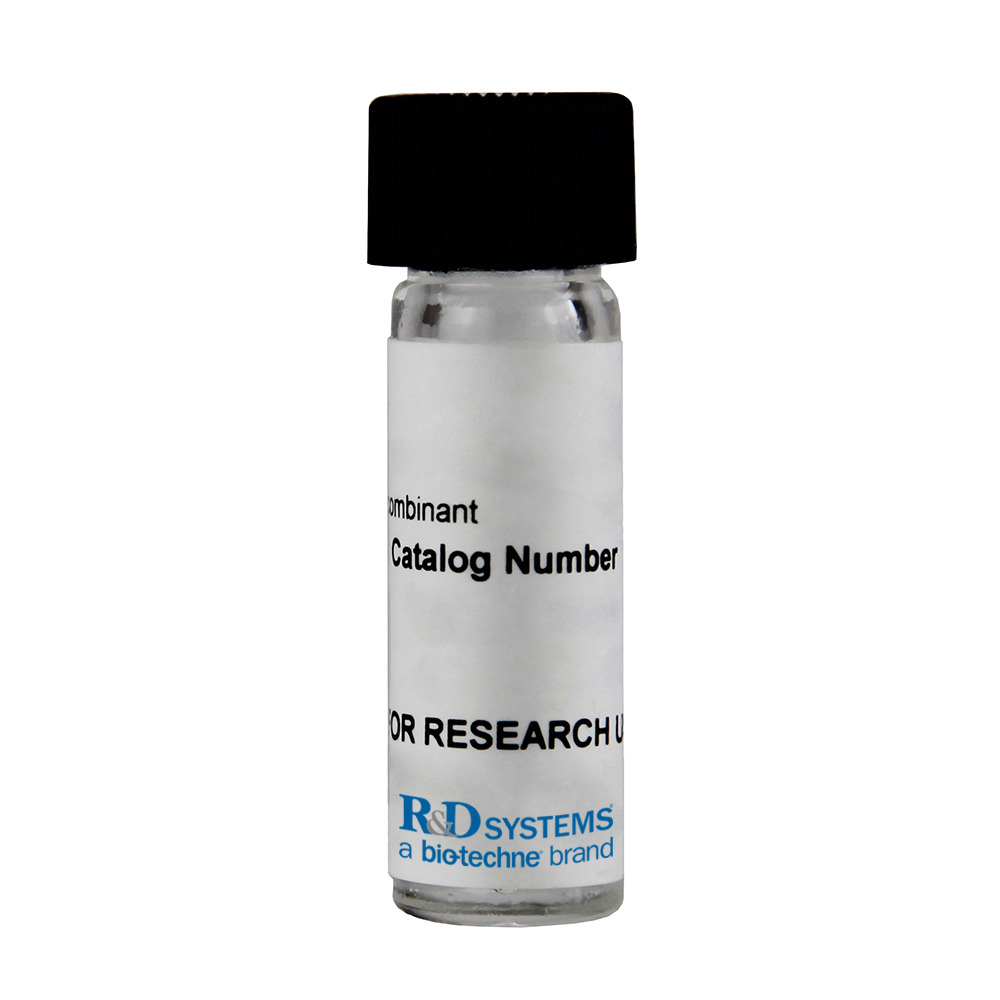 全部商品分类
全部商品分类

 下载产品说明书
下载产品说明书 下载SDS
下载SDS 用小程序,查商品更便捷
用小程序,查商品更便捷


 收藏
收藏
 对比
对比 咨询
咨询Carrier Free
CF stands for Carrier Free (CF). We typically add Bovine Serum Albumin (BSA) as a carrier protein to our recombinant proteins. Adding a carrier protein enhances protein stability, increases shelf-life, and allows the recombinant protein to be stored at a more dilute concentration. The carrier free version does not contain BSA.
In general, we advise purchasing the recombinant protein with BSA for use in cell or tissue culture, or as an ELISA standard. In contrast, the carrier free protein is recommended for applications, in which the presence of BSA could interfere.
3170-HM
| Formulation | Supplied as a 0.2 μm filtered solution in Tris and NaCl. |
| Shipping | The product is shipped with dry ice or equivalent. Upon receipt, store it immediately at the temperature recommended below. |
| Stability & Storage: | Use a manual defrost freezer and avoid repeated freeze-thaw cycles.
|
Recombinant Human HO-2/HMOX2 Protein, CF Summary
Product Specifications
Ser2-Leu291, with a C-terminal 6-His tag
Analysis

Background: HO-2/HMOX2
Heme oxygenase (HO) is the rate limiting enzyme in heme catabolism (1). It cleaves heme to biliverdin, carbon monoxide, and iron; biliverdin is subsequently converted by biliverdin reductase to bilirubin. The mechanism of HO is unique in that heme serves as both the substrate of the enzyme and as the prosthetic group for the activation of iron-bound O2. HO activity is highest in spleen where senescent erythrocytes are sequestered and destroyed. Two isoforms, HO-1 and HO-2, are expressed in most tissues. HO-1 is an inducible enzyme in response to heavy metals, oxidative stress, cytokines, and many drugs (2). HO-2 is constitutively expressed in the brain and testes. HO-1 is expressed mainly in spleen, liver, and kidney. In addition to its activity in the heme degradation pathway, HO-2 potentially serves as an oxygen sensor through its heme regulating motifs, which have the core sequence of Cys-Pro (3).
- Nader, G. (2008) Pharmacol. Rev. 60:79.
- Otterbein, L.E. and A.M.K. Choi (2000) Am. J. Physiol. Lung Cell Mol. Physiol. 279:1029.
- Yi. L. et al. (2009) J. Biol. Chem. 284:20556.






